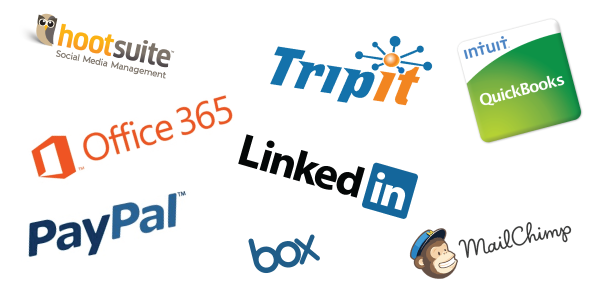Software-as-a-Service, commonly referred to as SaaS, continues to grow in both size and scale. We use SaaS products for everything from payroll management to paying our taxes to publishing our newsletters to writing our books.

Set up a service that is updated, integrated and easy for customers to use to get things done. Then customers pay, typically a monthly or annual licensing fee, to use the software for their data and receive the customer support and software updates necessary.
Off the top of my head, here are just a few SaaS products I use on a regular basis.
Because it’s more than likely you are interacting with these companies and others like them as a customer, or perhaps you are a leader within the organizations with SaaS products. Either way, ignoring SaaS customer experience is dangerous.
Customers who interact with these products don’t necessarily ever interact directly with the company providing them. In fact, they may never call support (or in some cases, even have access to it.) They may look at the trial version and decide they don’t need the upgrade, never actually purchasing the product. And they may never actually use the product after signing up!
While other types of organizations, like consumer packaged goods, also might never interact directly with customers, they might have an easier time identifying them and understanding how they use their products. We’ve worked with SaaS customer experience for several years, and witnessed the evolution of this not-very-old idea.

We’re just scratching the surface here, but you can see these patterns could lead to poor business results quickly. There’s no doubt these companies are here to stay, and customers want what they’re selling. But how can these companies offer the best experience for customers? It’s something we’ll be tackling more often here, but we’d love to know what your favorite SaaS products or companies are. Let us know!
Image credit: docbaty via Creative Commons license
Schedule a Touchpoint Discovery Workshop or let our Customer Experience Investigation™ team micromap the journey.
Tell us a little bit about your needs and we’ll get in touch!
 Jeannie is an award-winning customer experience expert, international keynote speaker, and sought-after business coach who is trailblazing the movement from “Reactive Customer Service” to “Proactive Customer and Employee Experience.” More than 500,000 people have learned from her CX courses on LinkedIn Learning, and her insights have been featured in Forbes, The Chicago Tribune, The Wall Street Journal and NPR.
Get Jeannie’s insights in your inbox each week by subscribing to The Weekly Win and follow her on LinkedIn, Instagram and YouTube.
Jeannie is an award-winning customer experience expert, international keynote speaker, and sought-after business coach who is trailblazing the movement from “Reactive Customer Service” to “Proactive Customer and Employee Experience.” More than 500,000 people have learned from her CX courses on LinkedIn Learning, and her insights have been featured in Forbes, The Chicago Tribune, The Wall Street Journal and NPR.
Get Jeannie’s insights in your inbox each week by subscribing to The Weekly Win and follow her on LinkedIn, Instagram and YouTube.